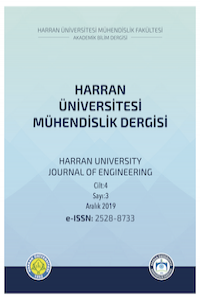Abstract
In this
study, the effects of pre-precipitation unit on activated sludge unit were
investigated. An aerobic activated sludge processes treating domestic
wastewater designed on the basis of theoretical calculations for two different
case – in the presence and absence of primary settler. A domestic wastewater
containing 650 and 530 mg/L total and biodegradable COD treated in an activated
sludge process in the presence and absence of primary settling respectively. It
is calculated that presence of primary settling decreased the total excess
sludge (an average 33%), total mass in the system (34%) reactor volume (34%)
and oxygen requirement (23%) in the activated sludge system. Presence of
primary settler removes a portion of total COD in the influent and therefore it
decreases the COD loading to activated sludge process.
Keywords
References
- Charpentier, J., Martin, G., 1996. New approach to oxygen requirement for low-load activated sludge. Water Res. 30, 2347–2356.
- Eddy, M.&, Burton, F.L., Stensel, H.D., Tchobanoglous, G., 2003. Wastewater engineering: treatment and reuse. McGraw Hill.
- Groves, K.P., Daigger, G.T., Simpkin, T.J., Redmon, D.T., Ewing, L., 1992. Evaluation of oxygen transfer efficiency and alpha-factor on a variety of diffused aeration systems. Water Environ. Res. 691–698.
- Gujer, W., 1980. The effect of particulate organic material on activated sludge yield and oxygen requirement. Prog. Water Technol. 12.
- Henze, M., Harremoes, P., la Cour Jansen, J., Arvin, E., 2001. Wastewater treatment: biological and chemical processes. Springer Science & Business Media.
- Horan, N.J., 1989. Biological wastewater treatment systems: theory and operation. John Wiley & Sons Ltd.
Abstract
In this
study, the effects of pre-precipitation unit on activated sludge unit were
investigated. An aerobic activated sludge processes treating domestic
wastewater designed on the basis of theoretical calculations for two different
case – in the presence and absence of primary settler. A domestic wastewater
containing 650 and 530 mg/L total and biodegradable COD treated in an activated
sludge process in the presence and absence of primary settling respectively. It
is calculated that presence of primary settling decreased the total excess
sludge (an average 33%), total mass in the system (34%) reactor volume (34%)
and oxygen requirement (23%) in the activated sludge system. Presence of
primary settler removes a portion of total COD in the influent and therefore it
decreases the COD loading to activated sludge process.
Keywords
References
- Charpentier, J., Martin, G., 1996. New approach to oxygen requirement for low-load activated sludge. Water Res. 30, 2347–2356.
- Eddy, M.&, Burton, F.L., Stensel, H.D., Tchobanoglous, G., 2003. Wastewater engineering: treatment and reuse. McGraw Hill.
- Groves, K.P., Daigger, G.T., Simpkin, T.J., Redmon, D.T., Ewing, L., 1992. Evaluation of oxygen transfer efficiency and alpha-factor on a variety of diffused aeration systems. Water Environ. Res. 691–698.
- Gujer, W., 1980. The effect of particulate organic material on activated sludge yield and oxygen requirement. Prog. Water Technol. 12.
- Henze, M., Harremoes, P., la Cour Jansen, J., Arvin, E., 2001. Wastewater treatment: biological and chemical processes. Springer Science & Business Media.
- Horan, N.J., 1989. Biological wastewater treatment systems: theory and operation. John Wiley & Sons Ltd.
Details
| Primary Language | English |
|---|---|
| Subjects | Engineering |
| Journal Section | Articles |
| Authors | |
| Publication Date | December 25, 2019 |
| Submission Date | August 17, 2019 |
| Acceptance Date | December 5, 2019 |
| Published in Issue | Year 2019 Volume: 4 Issue: 3 |

